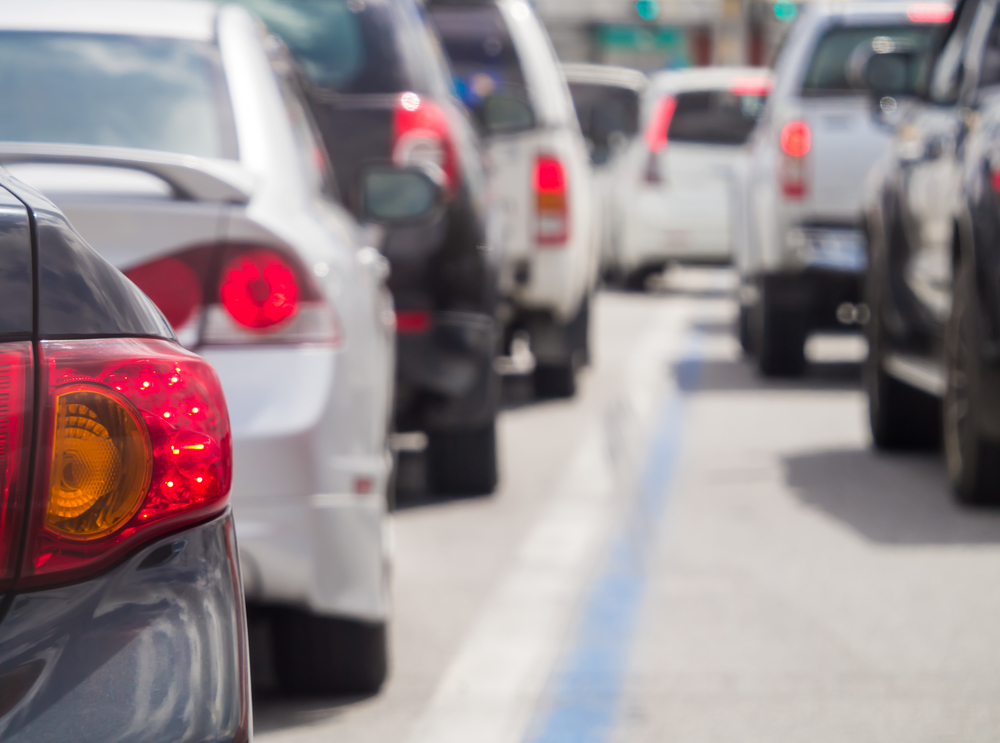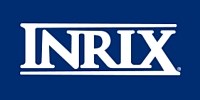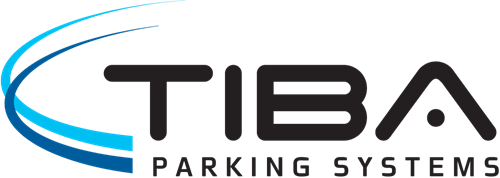Los Angeles Tops INRIX Global Congestion Ranking
Congestion cost U.S. drivers nearly $305 Billion in 2017, an average of $1,445 per driver

INRIX, Inc., the world leader in transportation analytics and connected car services, today published its annual Global Traffic Scorecard. INRIX analyzed 1,360 cities – up by nearly 300 cities from the 2016 Scorecard – across 38 countries. Based on the findings, the U.S. ranked as the most congested developed country in the world, with drivers spending an average of 41 hours a year in traffic during peak hours, which cost drivers nearly $305 billion in 2017, an average of $1,445 per driver.
The U.S. had three of the top five most congested cities globally, with Los Angeles (first), New York (tied for second with Moscow) and San Francisco (fifth) costing an economic drain upwards of $2.5 billion caused by traffic. Angelenos spent an average of 102 hours last year in traffic jams during peak congestion hours, costing drivers $2,828 each and the city $19.2 billion from direct and indirect costs. Direct costs relate to the value of fuel and time wasted, and indirect costs refer to freight and business fees from company vehicles idling in traffic, which are passed on to households through higher prices.
Despite the high costs of congestion in Los Angeles and other cities, American drivers, in general, had it easier than their German counterparts. At $1,770, congestion cost the average German driver 57 percent more than an American, after adjusting for exchange rates and the cost of living. Detroit had the lowest cost of congestion among the top 25 U.S. cities, at $1,256 per driver, and ranked among the bottom in all three categories of costs: commuting, business and leisure/other.
“Congestion costs the U.S. hundreds of billions of dollars, and threatens future economic growth and lowers our quality of life,” said Dr. Graham Cookson, Chief Economist at INRIX. “If we’re to avoid traffic congestion becoming a further drain on our economy, we must invest in intelligent transportation systems to tackle our mobility challenges.”
Interestingly, both New York and San Francisco, the second- and third-ranked cities in North America (91 and 79 hours spent in congestion respectively), have a similar average congestion rate as Los Angeles (13 percent), but show different commute patterns. San Francisco, for example, had the highest congestion rate (tied with Boston) on arterial and city streets during the peak commute hours, while New York holds the top spot during the daytime.
Table 1: 10 Most Congested Urban Areas in the U.S.
| 2017 Rank (2016 Rank) | City / Large Urban Area | 2017 Peak Hours in Congestion (% of 2016 change) |
% of Total Drive Time in Congestion | Total Cost Per Driver in 2017 | Total Cost to the City in 2017 |
| 1 (1) | Los Angeles, CA | 102 (-2%) | 12% | $ 2,828 | $19.2bn |
| 2 (2) | New York City, NY | 91 (+2%) | 13% | $ 2,982 | $33.7bn |
| 3 (3) | San Francisco, CA | 79 (-5%) | 12% | $ 2,250 | $10.6bn |
| 4 (4) | Atlanta, GA | 70 (-1%) | 10% | $ 2,212 | $7.1bn |
| 5 (5) | Miami, FL | 64 (-2%) | 9% | $ 2,072 | $6.3bn |
| 6 (6) | Washington, DC | 63 (+3%) | 11% | $ 2,060 | $6.1bn |
| 7 (8) | Boston, MA | 60 (+3%) | 14% | $ 2,086 | $5.7bn |
| 8 (9) | Chicago, IL | 57 (0%) | 10% | $ 1,994 | $5.5bn |
| 9 (10) | Seattle, WA | 55 (0%) | 12% | $ 1,853 | $5.0bn |
| 10 (7) | Dallas, TX | 54 (-8%) | 6% | $ 1,674 | $4.9bn |
INRIX 2017 Traffic Scorecard Provides In-Depth City Congestion Analysis
Collected from 300 million connected cars and devices, INRIX traffic data can be analyzed by different times of the day and across different parts of the road network, such traffic in downtown areas compared to vehicles coming in and out of a city, inside and outside of peak hours, and at weekends. U.S. insights include:
Downtown Metro Insights
- Commuters within Boston and San Francisco had the highest U.S. congestion rates on arterial and city streets during the peak commute hours (23 percent).
- But the worst downtown slowdowns were in El Paso, Texas where speeds dropped from 43 mph at free flow speeds to 5 mph when congested.
In and Out of City Insights
- Drivers moved more quickly in the South. The top five fastest non-congested speeds during the peak period on highways were all in the South with Florida having the highest uncongested average speeds in 2017. Drivers in Fort Myers moved the fastest at an average of 68 mph.
- Commuters around Everett, Washington spent more time stuck in traffic than anyone else, with a congestion rate of 28 percent on highways in and out of the city.
Business Impact
- New York businesses suffered the most from congestion with an average of 14 percent of travel time on weekdays in gridlock and where drivers wasted the most daytime hours stuck in traffic in the entire U.S.
- Santa Cruz, CA had the worst overall daytime congestion on arterial and highways with drivers spending 12 percent of their days sitting in traffic.
Weekend Insights
- Getting to the beach was not easy at Dana Point, CA where drivers were stuck in congestion 21 percent of the time during weekends, the highest in the U.S.
- Drivers cruised their slowest in Las Vegas, NV where weekend congestion speeds were just 5 mph.
The Most Congested Corridors in the U.S.
For the third year in a row, the (I-95) Cross Bronx Expressway in New York City tops the INRIX list of worst corridors, with the average driver on the 4.7 mile stretch wasting 118 hours per year in congestion, an increase of 37 percent over last year. For the third year in a row, the (I-95) Cross Bronx Expressway in New York City tops the INRIX list of worst corridors, with the average driver on the 4.7 mile stretch wasting 118 hours per year in congestion, an increase of 37 percent over last year. Three other New York corridors fill out the top 10, but it should be pointed out that the NYCDOT has taken various positive actions to improve safety and operations. For example, under NYC’s Vision Zero programs the official speed was lowered to reduce traffic fatalities and improve safety for a mix of bicycles, pedestrians, buses, and delivery trucks along local streets.
Surprisingly, Los Angeles, with the top spot in terms of peak hours sitting in congestion in the world, only holds one spot on the list – I-10 Eastbound between I-405 and I-110. San Francisco, the third highest ranking city in the U.S. for peak time spent in congestion, does not appear on the US worst corridors list until number 31.
Table 2: 10 Most Congested U.S. Roads in 2017
| Rank | City / Large Urban Area | Road | From | To | Worst Peak Period | Hours of Delay |
| 1 | New York, NY | I-95 Eastbound | Exit 1C/Alexander Hamilton Brdg W | Exit 6A/I-278 | PM | 118 |
| 2 | Chicago, IL | I-90/I-94 Southbound | Exit 53C/I-55 | Exit 34B/Lake Ave E | AM | 98 |
| 3 | Chicago, IL | I-290 Eastbound | Exit 15A/I-88 | Exit 28B/Paulina St | AM | 89 |
| 4 | Los Angeles, CA | I-10 Eastbound | Exit 3A/S Figueroa St | Exit 13/I-110 | PM | 74 |
| 5 | Pittsburgh, PA | I-376 Eastbound | Exit 65/Academy St | Exit 77/Edgewood | AM | 66 |
| 5 | Chicago, IL | I-90 Southbound | Exit 50A/N Ogden Ave | Exit 43C/Montrose Ave | AM | 66 |
| 7 | New York, NY | E 34th St | FDR Dr | 5th Ave | AM | 59 |
| 8 | New York, NY | Belt Pkwy E | Exit 3/I-278 | Exit 17/Cross Bay Blvd | PM | 57 |
| 9 | New York, NY | E 42nd St | FDR Dr | 7th Ave | PM | 56 |
| 10 | Boston, MA | I-93 Southbound | Exit 20B/Albany St | Exit 8/Furnace Brook Pkwy | PM | 55 |
How the U.S. Cities Compare to Top Cities Worldwide
At the global level, Los Angeles topped the list of the world’s most gridlocked cities, with drivers spending 102 peak hours in congestion in 2017, followed by Moscow (91 hours), New York (91 hours), San Francisco (79 hours) and Bogota (75 hours).
Table 3: 10 Most Congested Cities in the World in 2017
| 2017 Rank | Global City | Country | Continent | 2017 Hours Spent in Congestion | Percentage of Total Drive Time in Congestion |
| 1 | Los Angeles | U.S. | North America | 102 | 12% |
| 2 | Moscow | Russia | Europe | 91 | 26% |
| 2 | New York City | U.S. | North America | 91 | 13% |
| 4 | Sao Paulo | Brazil | South America | 86 | 22% |
| 5 | San Francisco | U.S. | North America | 79 | 12% |
| 6 | Bogota | Colombia | South America | 75 | 30% |
| 7 | London | U.K. | Europe | 74 | 13% |
| 8 | Atlanta | U.S. | North America | 70 | 10% |
| 9 | Paris | France | Europe | 69 | 13% |
| 10 | Miami | U.S. | North America | 64 | 9% |
Of the 38 countries covered by the INRIX 2017 Traffic Scorecard, Thailand leads with the highest average hours spent in peak congestion (56 hours), outranking Indonesia (51 hours) and Columbia (49 hours), followed by Venezuela (42), and the U.S. and Russia both with 41 hours. Among developed nations, U.S. and Russia shared top of the most congested countries in the world.
Table 4: 15 Most Congested Countries in the World in 2017
| 2017 Rank (2016 Rank) |
Country | Continent | 2017 Peak Hours Spent in Congestion |
| 1 (1) | Thailand | Asia | 56 |
| 2 (2) | Indonesia | Asia | 51 |
| 3 (2) | Colombia | South America | 49 |
| 4 (6) | Venezuela | South America | 42 |
| 5 (4) | Russia | Europe | 41 |
| 5 (5) | U.S. | North America | 41 |
| 7 (8) | Brazil | South America | 36 |
| 7 (7) | South Africa | Africa | 36 |
| 9 (10) | Turkey | Europe | 32 |
| 10 (11) | U.K. | Europe | 31 |
Good data is the first step in tackling congestion. Applying big data to create intelligent transportation systems is key to solving urban mobility problems. INRIX data and analytics on traffic, parking and population movement help city planners and engineers make data-based decisions to prioritize spending in order to maximize benefits and reduce costs now and for the future.
The key findings of the INRIX 2017 Traffic Scorecard provide a quantifiable benchmark for governments and cities across the world to measure progress to improve urban mobility and track the impact of spending on smart city initiatives. Please visit www.inrix.com/scorecard for:
- Full 2017 Traffic Scorecard report including tables of all rankings for North America, United States and globally
- Global infographics
- Interactive webpage with data and information for all 1,361 cities and 38 countries
- Complete methodology
About INRIX
INRIX smart parking solutions get real-time parking information to drivers on the go, curbing traffic before it starts. INRIX Parking also provides cities with actionable information they can use to improve parking management and policies.
We engage cities, automakers, private parking operators, and parking equipment makers to create the ultimate parking experience for drivers. By combining raw data from existing parking infrastructure with acquired data from more than 300 million connected devices, we can guide drivers to the best available parking options.




Comments
There are no comments yet for this item
Join the discussion